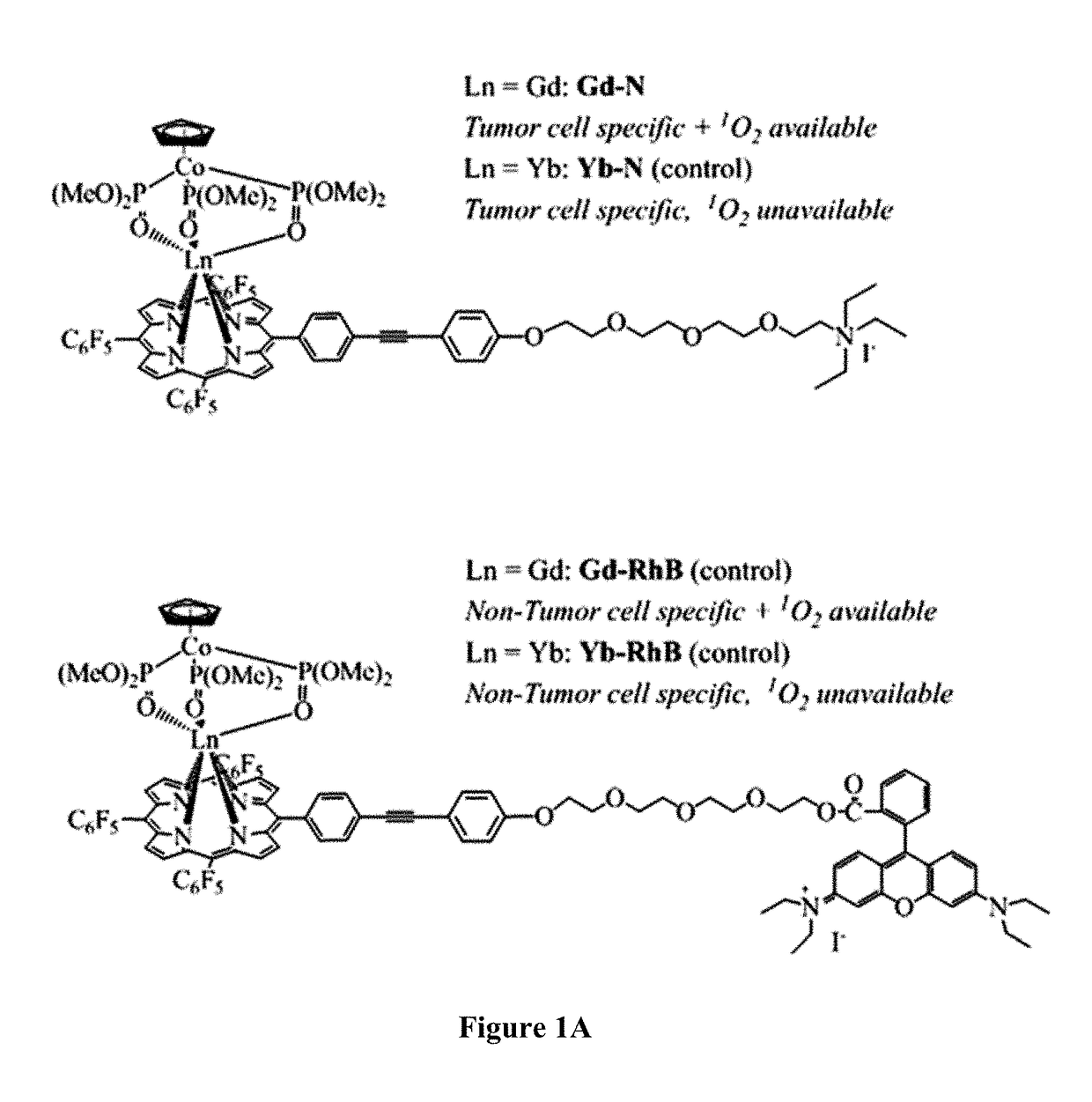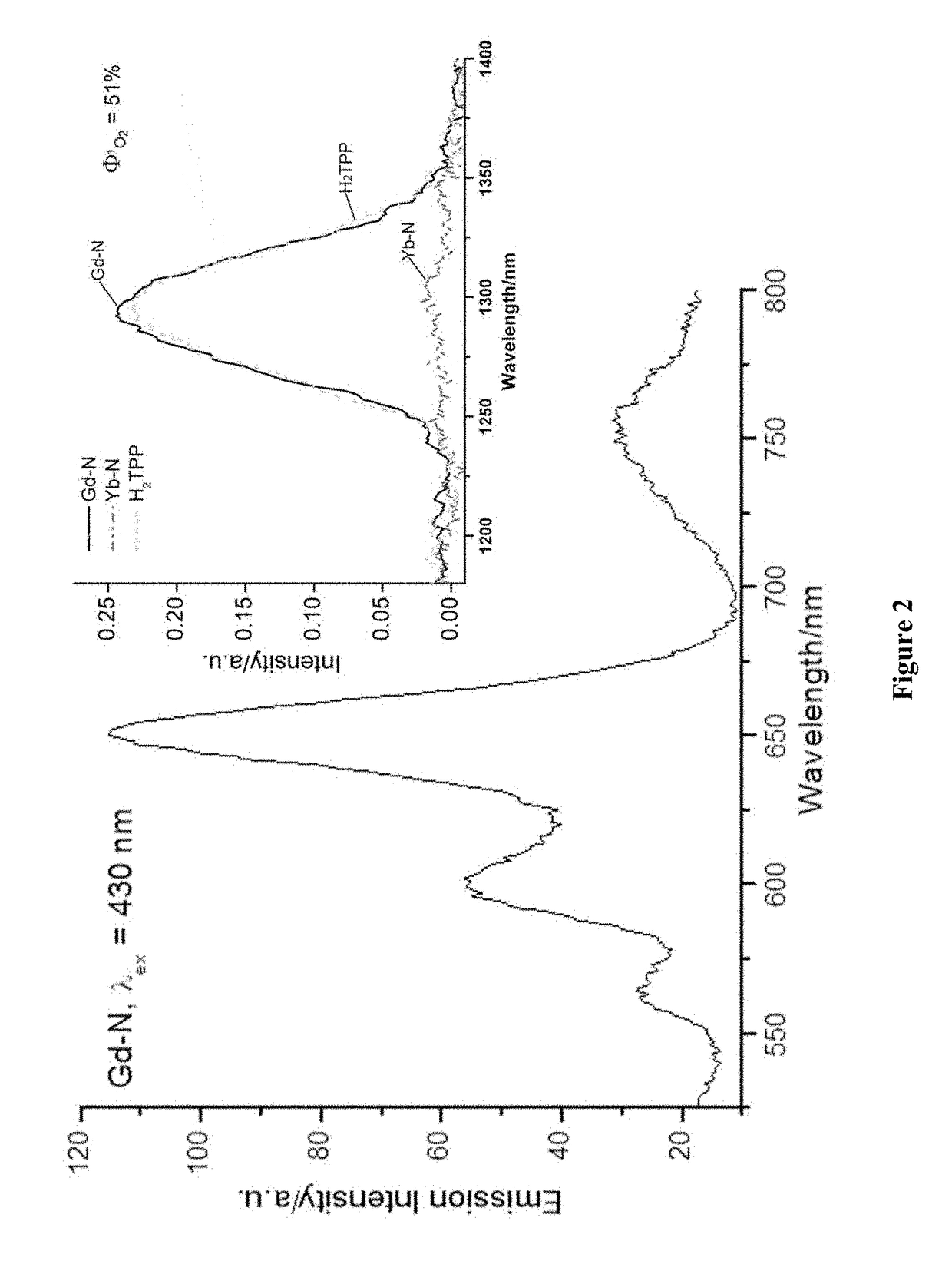Multi-modal bioprobe for bladder cancer imaging and photodynamic therapy
a bioprobe and bladder cancer technology, applied in the field of new generation of photodynamic therapy agents, can solve the problems of cancer selectivity of pdt agents, pdt is still not deserved popularity in society, and jeopardize normal cells,
- Summary
- Abstract
- Description
- Claims
- Application Information
AI Technical Summary
Problems solved by technology
Method used
Image
Examples
Embodiment Construction
[0230]The present invention is not to be limited in scope by any of the specific embodiments described herein. The following embodiments are presented for exemplification only.
[0231]Without wishing to be bound by theory, the inventors of the present invention have developed gadolinium porphyrinate (Gd—N; FIG. 1A), a PDT agent which is synthesized on the basis of Yb—N and shown 51% singlet oxygen quantum yield with characteristic NIR emission of porphyrin upon photoexcitation. (FIG. 1B-D) Comprehensive studies have revealed that Gd—N can recognize tumor cells by their anionic phosphotidylserine membrane in the first six hours after administration. Upon administration of Gd—N, laser-irradiation at certain wavelengths, Gd—N enters the tumor cells and produce 1O2 in addition to exhibiting TP-induced NIR emission. Results of the in vivo mouse models and biodistribution assays further illustrates that Gd—N is found to be located in the tumor after simple injection of Gd—N into the blood v...
PUM
| Property | Measurement | Unit |
|---|---|---|
| wavelength | aaaaa | aaaaa |
| wavelength | aaaaa | aaaaa |
| temperature | aaaaa | aaaaa |
Abstract
Description
Claims
Application Information
 Login to View More
Login to View More - R&D
- Intellectual Property
- Life Sciences
- Materials
- Tech Scout
- Unparalleled Data Quality
- Higher Quality Content
- 60% Fewer Hallucinations
Browse by: Latest US Patents, China's latest patents, Technical Efficacy Thesaurus, Application Domain, Technology Topic, Popular Technical Reports.
© 2025 PatSnap. All rights reserved.Legal|Privacy policy|Modern Slavery Act Transparency Statement|Sitemap|About US| Contact US: help@patsnap.com



